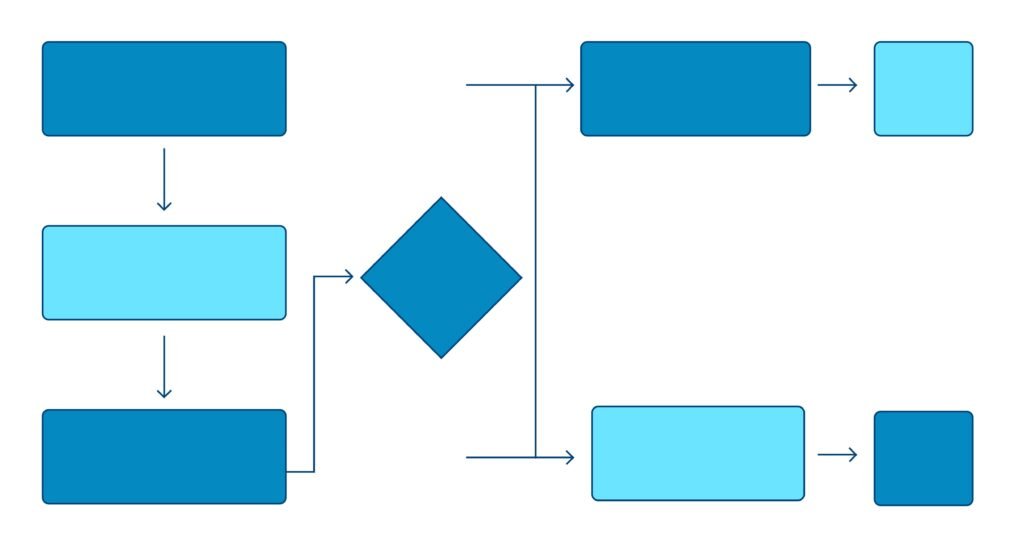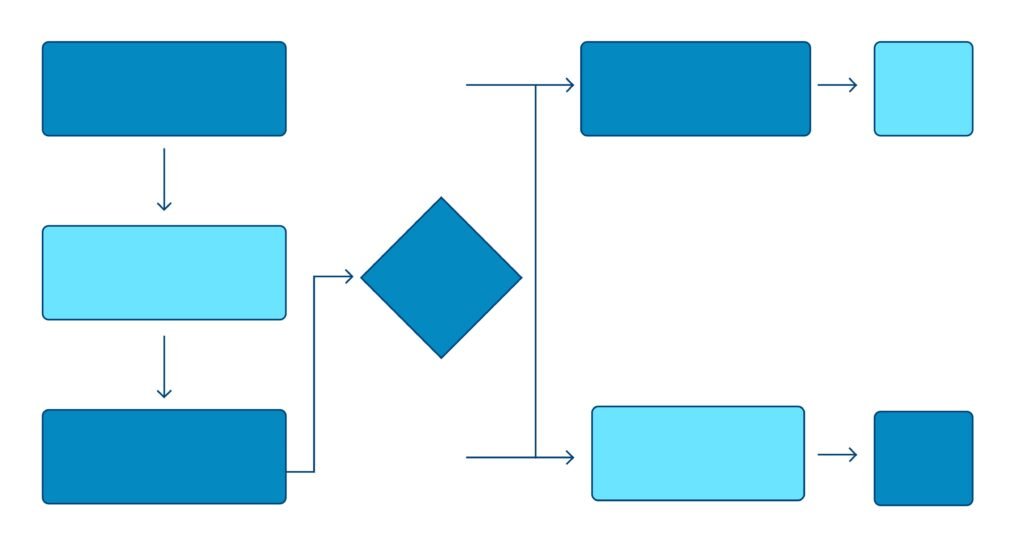Using Business Process Modeling and Tools

When you run a business, you have several departments and multiple workflows that help you achieve the desired result. These workflows range from simple to complex ones. However, it is always a huge task to understand business processes. Hence, using a graphical representation, you can use Business Process Modeling and tool to understand and simplify these business workflows.
A business process model is a graphical representation of a business process or workflow and the extended sub-processes. Process modeling generates comprehensive, quantitative activity, diagrams, and flowcharts that contain critical insights about the functioning of a business process.
This blog will teach you about business process modeling and its uses.

Understanding Business Process Modeling and Tools
The first step in this journey is to understand business process modeling, which will guide you in implementing the same in your business.
The business process models include the following:
● Events and activities that take place in a workflow
● The person responsible for initiating those events and activities
● Decision points and the different paths of the workflows due to the outcome
● Machines or technology involved in the business process
● Timeframes of the overall strategy and each step in the process
● Success and failure rates of the process
Key concepts and principles of business process modeling.
Here are some of the key concepts and principles of business process modeling:
● Process models are an outcome of the data-mining algorithms that use the data present in the event logs to construct models of the workflows as they exist.
● Process models are a result of quantitative data. Hence, they have genuinely objective views of workflows as they exist in practice, like critical data, metrics, or events that may have gone unnoticed.
● Business process models are different from process maps. Process maps are manual and are based on employee reports. They provide higher-level views of workflows. Process models are data-driven deep dives that present more objective views of workflows.

Types of business process modeling techniques
Process models are usually made of two standardized styles of graphical business process notation:
● Business Process Modeling Notation (BPMN) — also called Business Process Model and Notation.
● Unified Modeling Language (UML).
Within these notation systems, certain visual elements have universally recognized meanings when used in a process model. Whether an organization uses UML diagrams or BPMN diagrams, due to these standardized notation methodologies, anyone can easily share or read these process models:
● Arrows represent sequence flows
● Diamonds represent decision points or gateways
● Ovals represent the beginnings and endpoints of processes
● Rectangles represent specific activities within a workflow
● Swimlanes are used to identify who owns which components of a process
Role of process modeling in business process improvement
If you’re running a business, you can only continue providing value to your customers by changing your strategies or execution methods. If you’re a stagnant company and are adamant about your principles, you may land in a soup because competitors better than you will take the game away.
The best way to compete with your peers is by having a clear strategy or game plan for your business. The complex business processes are a hindrance for you to chalk a strategy. Hence, you can use business process modeling to overcome your processes’ complexities and design a clear-cut roadmap to success. These models will increase your company’s productivity, efficiency, and effectiveness.
Process modeling helps companies by providing them with opportunities for improvement by disrupting the current business process and analyzing the supporting elements. The coherent picture of business processes through these process models will help you identify the areas of improvement and upgrade in your business processes. Hence, business process modeling can be an asset in business process improvement.
Transform your operations, achieve your goals
with our expert BPM consulting.
Benefits of Business Process Modeling
There are several benefits of business process modeling; however, the most important ones are the following:
Improved process visibility and understanding
Suppose you’re a school student, and your teacher verbally explains your class schedule for tomorrow. In contrast, suppose your teacher has given your tomorrow’s class schedule in a written format with a graphical representation. Which one do you think will entice you? If it were me, the second format would be more enticing because it is graphically and visually represented and has more clarity.
Similarly, when business processes have a visual representation, they become significantly easier to understand and improve the visibility of the operations. The visibility of business processes is a crucial factor in determining the success of these processes. When the workforce in your company can understand the business processes thoroughly, the implementation and execution of these processes become easy. Hence, process models have improved visibility and understanding of business processes in an organization.
Identification of bottlenecks and inefficiencies
When you have a clear-cut picture of something, you can easily detect the flaws in the same. When you watch a movie in a theatre, you can make out minor mistakes in the film. Process models are a visual representation of business processes. When the business processes are laid down in a graphical format, you can quickly identify their inefficiencies and bottlenecks.
It will give you a scope of improvement which may increase the quality of business processes, ultimately improving the company’s reputation and revenue. Hence, process models help identify bottlenecks and inefficiencies in business processes providing them with further scope for improvement.
Enhanced collaboration and communication among stakeholders
Once you lay down your business processes visually, you can engage your stakeholders to discuss different aspects of these business processes. The above communications can brew many conversations around improving business processes, eliminating redundancies, and discussing loopholes in business processes. These will give a scope of improvement for you.
It will also help your business with multiple meaningful collaborations, resulting in more extensive customer engagement, colossal revenue, and profitability. Hence, process models can enhance partnerships and communications among stakeholders.
Facilitation of process standardization and automation
Using process models in your company can help standardize your organization’s business processes. Standard Operating Procedures (SOPs) are vital to any organization. Any new joiners who begin their career with your company must initially go through the SOPs and understand them perfectly to gel with the company culture. But isn’t reading a detailed book on SOPs exhausting and tedious? Of course, it is exhausting.
Hence, incorporating SOPs in the form of process models will ease the understanding process of the newcomers. They will also thoroughly learn about the company procedures and culture without any boredom. It will help the new trainees gel with the company’s workforce and culture well and boost their confidence and productivity.
Alignment of processes with business goals and strategies
The designing of process models includes careful thinking and procedure. When you view a completed business process model, you can see the alignment of the business processes with the goals and strategies of the company. It is a critical factor in any business process model.
Whenever an employee in your company goes through any business process models of your organization, they can quickly remind themselves about the business goals and strategies of the company. Every company aims to become the best in their respective industry. You can keep your goals and strategy alive through business process models, as a distraction is prevalent when chasing a bigger purpose.
Business Process Modeling Tools and Techniques
Here are some of the business process modeling tools and techniques that you can implement in your company for maximum benefits:
Business Process Modeling Notation (BPMN)
Business process modeling notation (BPMN) is a set of standardized symbols that mark different activities and interactions in a visual workflow. In contrast to the other notation methods, BPMN has a design that suits process modeling. It is a standardized format used by most analysts, experts, and consultants in various industries.
UML Diagrams
Software developers commonly use Universal Modeling Language (UML) diagrams to create object-oriented representations of the relationships between actors and systems. For example, users create use-case diagrams that go over different scenarios to which a business process might apply.
Flowcharts
Flowcharts are simple business process modeling tools for users to create visual representations of business processes. They’re the first step in creating more complex automation or refining current functions in a business workflow.
Gantt Charts
Business users use Gantt charts to break complex tasks into smaller sub-tasks linked by certain dependencies. Each subtask must execute within a specific timeframe. Gantt charts are best for diagramming functions completed at a particular deadline to achieve optimal results. In addition, they’re easy to edit and help users see the effect different changes have on dependencies and timelines.

Step-by-Step Guide to Business Process Modeling
Here are the steps of business process modeling:
Identifying the process scope and objectives
Without a clear goal, you’re not going to reach the endpoint. Suppose you’re running a race; unless your mind knows it is a 2- or 5-km race, you cannot prepare your strategy to win it. Similarly, the first step in creating a business process model is to identify the scope and objectives of the business process. When you know the goals of the business processes, you can easily design the process model keeping the purpose and scope intact.
Gathering relevant process information and data
For designing a graphical or visual representation of your company’s business processes, you will need relevant information and data. You must gather all the required data at each step keenly to avoid missing out on anything that can compromise the result. With accurate data, you can make a fabulous process model with detailed information and simple understanding.
Mapping process steps, activities, and decision points
The next step includes mapping different process steps and actions related to each step. You must also map the critical decision points in those business processes for maximum visibility and accessibility of your operations. With the proper mapping of actions, activities, and decision points, your process models can benefit the company.
Documenting inputs, outputs, and dependencies
Your next step involves documenting all your business processes’ inputs, outputs, and dependencies. These will help us analyze the business processes in detail. It further helps identify loopholes and provides scope for improvement via updates, technology, or automation, whichever is feasible.
Validating and refining the process model
Validating the process models is a very crucial step in the design process. You must take maximum feedback and validation from stakeholders and employees to identify any inefficiencies or loopholes in the model. They can also help you guide towards refining the process model according to the processes in the company. It will eventually improve the company’s operations significantly.
Best Practices for Successful Business Process Modeling
Here are some of the best practices for successful business process modeling:
Involving key stakeholders throughout the modeling process.
Stakeholders can play a crucial role in guiding you toward making a worthy process model. They can give you relevant feedback as they know the business processes and can also give you a third-party perspective which can be crucial in this case. Hence, involving stakeholders can be extremely helpful.
Ensuring clarity and consistency in process notation and symbols.
You must ensure that the process notation and symbols you use in your process models are consistent. If you change the clarity related to inscriptions and signs, you may confuse your workforce. It will eventually beat the whole purpose of process models: clarity and simplicity. So, ensure that you maintain the notations and symbols throughout the process model.
Iteratively refining and updating process models based on feedback and changes.
When you take feedback, and if they’re constructive, it is ideal to instantly implement them as it can significantly benefit your business process models. Your stakeholders or employees are the perfect people who can give your constructive feedback and opinions. When you update your process models according to the given feedback, business processes’ overall productivity and efficiency increase.
Documenting and sharing process models effectively.
Another best practice is to document and share process models to have high-end discussions and relevant feedback. It will give you enough scope for improvement and improve the models’ effectiveness before implementation and execution.
Conclusion.
Business process modeling is a great way to bring clarity to your business processes. In reality, business processes are highly complex, and graphical representations of these processes are a great way to make them easy to understand. These models improve the quality of business processes in your organization. They also improve the productivity, efficiency, and effectiveness of your business. Hence, adopting business process modeling in your company is always a great idea.
Q1: What is Business Process Modeling, and Why is it Important for Businesses?
Q2: How Does Business Process Modeling Help Improve Business Operations?
Q3: What Are the Key Techniques, Tools, and Best Practices for Successful Business Process Modeling?
You May Also Like,
- Business Process Mapping
- Top 10 Business Process Mapping Tools For Increasing Business Efficiency
- What is Business Process Design, Steps and Importance ?
- Business Process Improvement Methodologies to Smoothen the Workflow
- The Complete Breakdown of Business Process Analysis
- Types of Business Process System
Take Action Now and Make a Difference
Feel Free To Contact Us for Further Information




